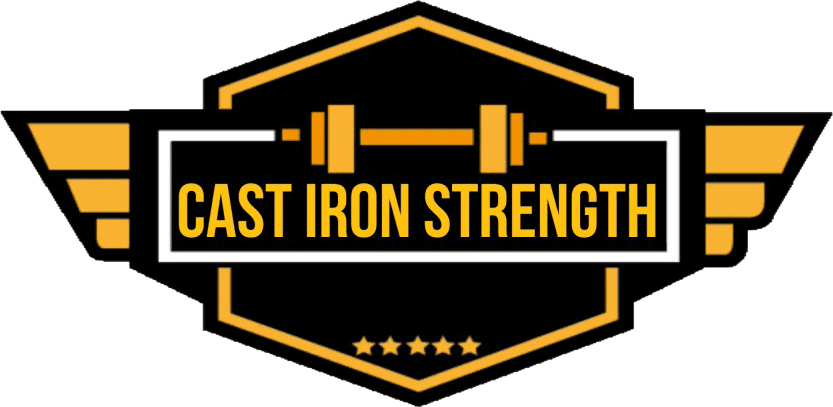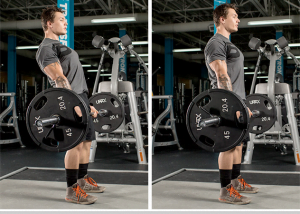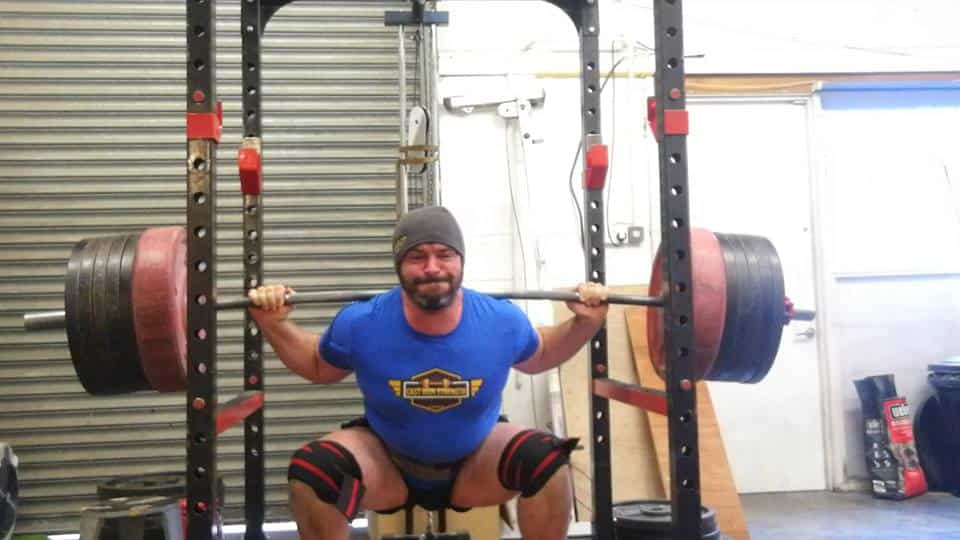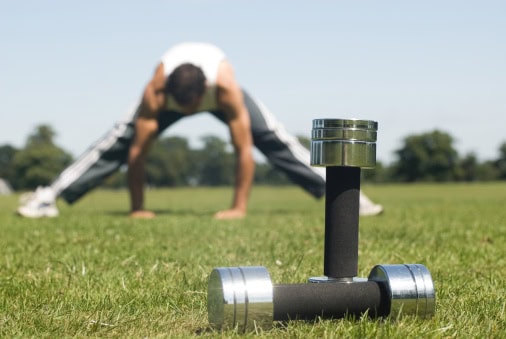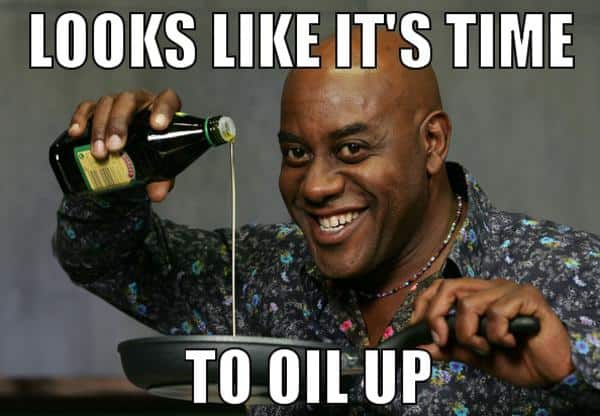Ok ok, there are no butt plugs involved, but now that I’ve peaked your interest it’s time to improve your deadlift. The deadlift, the most primal lift. What is more manly than grunting, getting your hands dirty, stomping your feet and picking up some heavy ass weight? But, just because we all want to be the manliest of men, doesn’t mean we have to lockout big weights like we’re trying to impress Mia Khalifa on the set of your next favorite Pornhub clip! Locking out deadlifts by arching the lower back and forcing your hips forward is definitely not conducive to locking out massive weights, technique wise, energy/efficiency wise, or long-term health-wise. In this post I’ll be explaining one of the most common deadlift errors, namely using the lower back to lockout deadlifts, the dangerous of it, the technique, strength issues, and muscle firing patterns that cause it, specific movements you can use to bring up those weak links and fix those movement patterns, to set you on your way to pulling bigger weights more often all the while staying pain free.
Through my own experience with myself struggling to increase my own deadlift and coaching lifters over the years, I have found the problem of using the lowerback to lockout deadlifts to be a very common. There could be a few different factors causing your poverty deadlift lockout.
Posture
The biggest issue here is usually related to anterior pelvic tilt (ATP). I won’t go into all the nitty gritty here, as that is a whole other article itself, and there is already TONS of boring articles out there on the interwebs waiting to be read. Basically, ATP is when the pelvis (read HIPS) are tilted slightly forward, this is most commonly caused by tight hip flexors, tight hamstrings, tight spinal erectors, weak abdominals and weak glutes. Fortunately the majority of the time it is relatively straightforward to fix, although it can take time.
Movement patterns
For the majority of lifters, the poor movement pattern of arching the deadlift to lockout is brought on by the glutes being weak/inactive, and the lower back is the strongest prime mover. Over time this bad pattern becomes engraned and it then becomes the “default” setting for the way you move. Unfortunately fixing the movement pattern usually take a lot longer than bringing up lagging muscle groups. Proper movement takes thousands of good repetitions to over-ride the engraned patterns in order to take over as the new “default”. So this good movement is something that you will have to focus on continuously more than likely for months/years, and it doesn’t only apply to deadlifts, but assistance lifts aswell.
Weak muscles
The weak muscle groups most commonly associated with this problem are more often than not the glutes and abs. The abs work to help stabilise the core, and allow force to be transferred through a stable core to the bar as it is being driven to lockout. The glutes are the prime movers here, they work by driving the hips forward which helps you stand erect at lockout. Synergistically the glutes drive the hips forward which transfers the force through a solid stable core to the upperback where your arms and thus barbell is hanging from. If your glutes are not strong enough to drive your hips forward and your abs not strong enoough to keep your core stable, the strongest muscles will take over in ordet to complete the lift, which with newer lifters is usually the lowerback. In order for the lowerback to do any moving of the bar in an upward direction it needs to arch backwards, this results in a lot of pressure being put on the discs of the lowerback, as well as limiting your deadlift numbers to a max that your tiny spinal erectors are capable of moving. I don’t know about yours (but I can take a pretty confident guess) but my glutes are a lot larger than my spinal erectors. Bigger muscles are capable of producing more force, who would have thought!
Fixes:
When fixing a problem like this you need to start from the ground up. Before warming up you should do some stretching and foam rolling. I don’t normally recommend stretching, but in this case, I do! Foam rolling of the glutes, lightly, just to loosen them up, a deeper/harder roll on the hip flexors/upper quads, hamstrings and lower back. I like to use a hockey ball for this as it really gets into the muscle. Follow the rolling with some stretching of your hamstrings.
Warming up should include a breathing and bracing drill of some kind. I like to lie on my back with my feet against the wall in a squat position, then exhale completely, pulling my belly button in as I exhale, then take a deep breathe in through my nose, filling up from the belly upwards and keeping the abs tight the whole time. Repeat for 10 breaths. After the bracing and breathing drill comes activation drills to get the weak muscles firing on all cylinders. These can be as simple as a plank and side plank for the abs and prone glute kickbacks, hip thrusts and x band walks for the glutes. 2 to 3 light, slow and controlled sets of each should do the trick.
Now to the actual strengthening of these muscles and relearning the motor patterns. I have found with my clients that the best movements to help with this are definitely more specific to the actual deadlift and squat, therefore deadlifts, RDL’s, squats and goodmornings. The trick is to slow all these movements down and really focus on contracting the glutes and abs throughout the entire range of motion. Now, because these muscles are weak, you won’t be able to jump straight to your current max weight. This will take a lot of restraint and time, but will definitely pay off in the long run. If you do push the weight up too soon, your body will revert back to using the incorrect musculature and just delay the entire process. Now when I say, use light weights, I have had people drop to the empty bar for squats and 60kg for deadlifts, this may sound ridiculous but if you do the movements correctly it will be one hell of a workout and it won’t take long for the glutes to start firing better and the bar to get heavier.
Top 2 Deadlift cues to help reinforce the technique:
1) Stand tall. ( Standing as tall as possible means standing as straight as possible, think of making a straight line from the center of your foot through to the top of your head)
2) Drive the glutes forward from the start. (Don’t let your hips shoot up vertically, instead think of them pushing forward towards the bar as your knees extend)
Using the above protocol one of my lifters were able to put 40kg onto his deadlift in a matter of 10 months. 10 months may seem like a long time to add 40kg, but if your deadlift has been stuck, like he was, for over a year, 10 months is the best damn 10 months of your life. And his progress isn’t showing any signs of slowing. It definitely isn’t a quick and easy fix, but the deadlift gains will definitely be worth it, and IF you do manage to impress Ms Khalifa, make sure to use good technique!
Matthew Coppenhall
Matthew has competed in powerlifting for the past 10 years, prior to which he was a nationally ranked motocross rider. He currently holds multiple South African national powerlifting records across 3 weight divisions. Last year he was diagnosed with Myasthenia Gravis and has fought to regain the majority of his strength and return to competitive lifting. Matthew is the owner of The Block Barbell, a private strength training facility, as well as running his online coaching service, Legend Athletic Strength Development (www.legendathletic.co.za), through which he plans the training of athletes from a variety of sports, specialising in powerlifting coaching.
You can contact Matthew through his website: www.legendathletic.co.za or email: matthew@legendathletic.co.za
